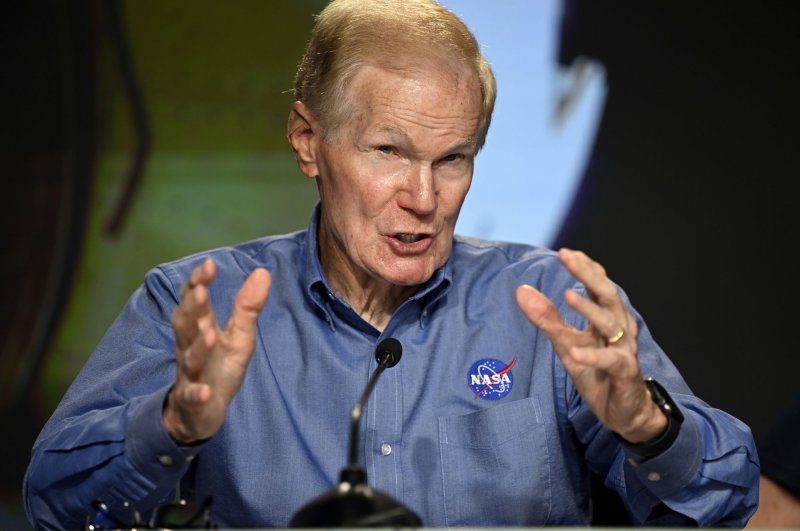1 of 2 | NASA Administrator Bill Nelson co-chaired a briefing Thursday on the agency's efforts to study unidentified anomalous phenomena. NASA has appointed a director of UAP research, but said the person would not be publicly identified. File Photo by Joe Marino/UPI |
License Photo
Sept. 14 (UPI) -- NASA Administrator Bill Nelson said Thursday that the U.S. space agency has appointed an unidentified director to oversee the space agency's probe of the origins of unidentified anomalous phenomena, or UAP.
Nelson said during a livestream event on a report from an independent study team that a NASA team had not found any evidence that UAPs, commonly known as UFOs had "extraterrestrial origin" but said the top takeaway from the independent study team report is that there's much more to learn about the mysterious unidentified anomalous phenomena.
"We don't know what these UAP are, but we're going to try to find out. We will be transparent about what we do find. Whatever we find we're going to tell you."
"We're in a world of discovery and we, NASA, have taken for the first time concrete action to seriously look into UAP," Nelson added.
NASA's Nicola Fox said the person has already been appointed, but will not be publicly identified.
Nelson said due to the sheer number of galaxies in the vast universe the mathematical probability that there's an Earth-like planet out there supporting life is very high according to NASA scientists.
"If you ask me do I believe there's life in a universe that it's so vast that it's hard for me to comprehend how big it is, my personal answer is yes," Nelson said. "We will use AI and machine learning to search the skies for anomalies."
Astrophysicist David Spergel, who chaired the NASA independent study team, said that with rigorous methodology and public engagement NASA can contribute to the government's efforts to understand UAPs.
"The current approach to UAP data collection has led to limited data. Once we have a good data set AI and other tools will be helpful in understanding UAPs," Spergel said.
NASA's Daniel Evans, a member of the team studying UAP, said that "understanding UAP is vital for several reasons."
"It advances our understanding of the world around us. The study aim is to enhance situational awareness. The presence of UAPs raises serious questions about the safety of our skies," he said.
NASA said in a statement the report "aims to inform NASA on what possible data could be collected in the future to shed light on the nature and origin of UAP. The report is not a review or assessment of previous unidentifiable observations."
"The UAP independent study team's main focus for the report is to come up with a way in which to evaluate and study UAPs going forward by using data, technology and the tools of science," NASA said.
NASA held a hearing in May on the results of a seven-month investigation into the UAPs.
University of Delaware astrophysicist Federica Bianco, one of 16 members of the independent study team, said then that NASA has a problem with data analysis and management when it comes to the UAPs.
She said that the scientific method requires UAP data that meet the standard.
"Their collection is inconsistent," Bianco said.
At the May hearing, witnesses, including naval aviators, described UAP objects moving "at considerable speed, without discernible means of propulsion."
Spergel is president of the Simons Foundation and founding director of its Flatiron Institute for Computational Astrophysics.
Other members of the independent study team include former astronaut Scott Kelly and Warren Randolph, deputy executive director of the Federal Aviation Administration's Accident Investigation and Prevention for Aviation Safety department.
NASA said it doesn't actively search for UAPs, but makes data collected through satellites and other means available to researchers.
The agency defines UAPs as "observations of events in the sky that cannot be identified as aircraft or known natural phenomena from a scientific perspective."
The independent study team's report was commissioned to examine UAPs from a scientific perspective and to create a roadmap for how to use data and scientific tools to advance the understanding of UAPs.















